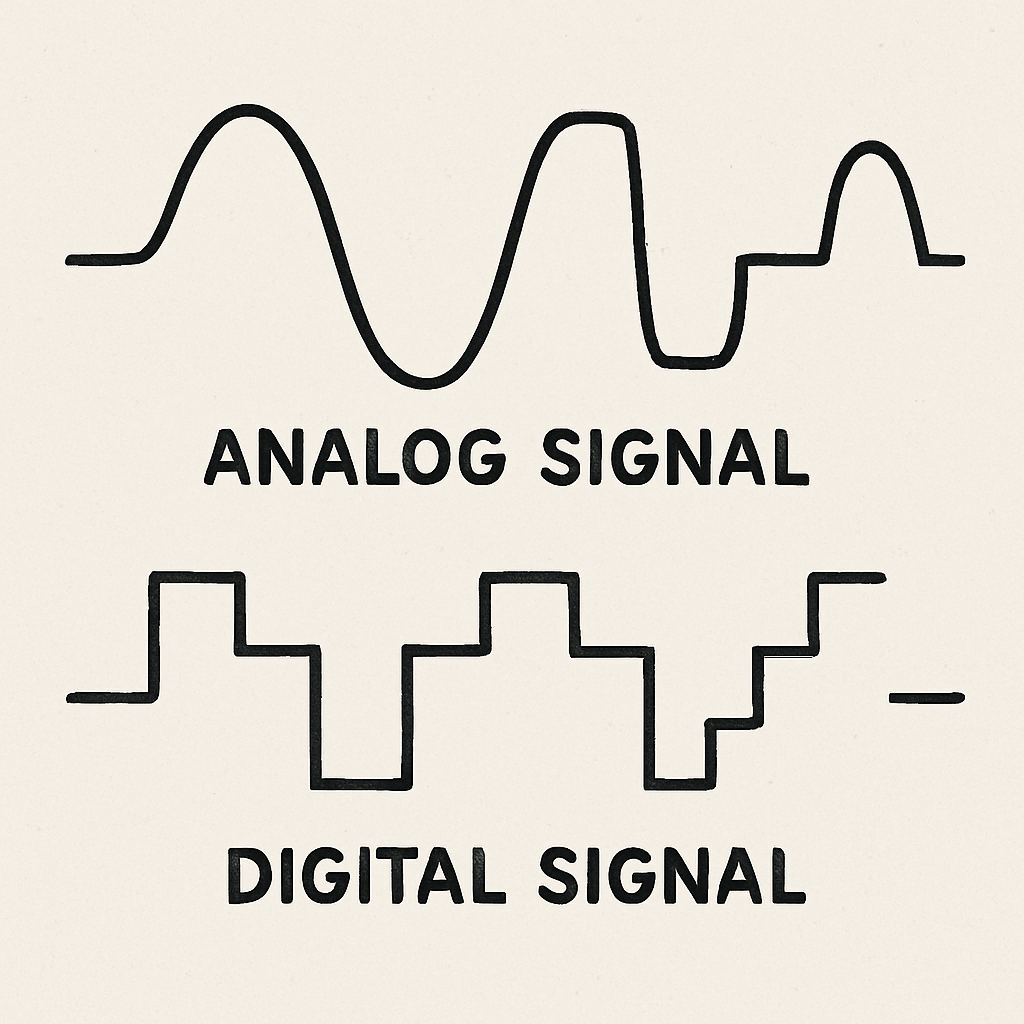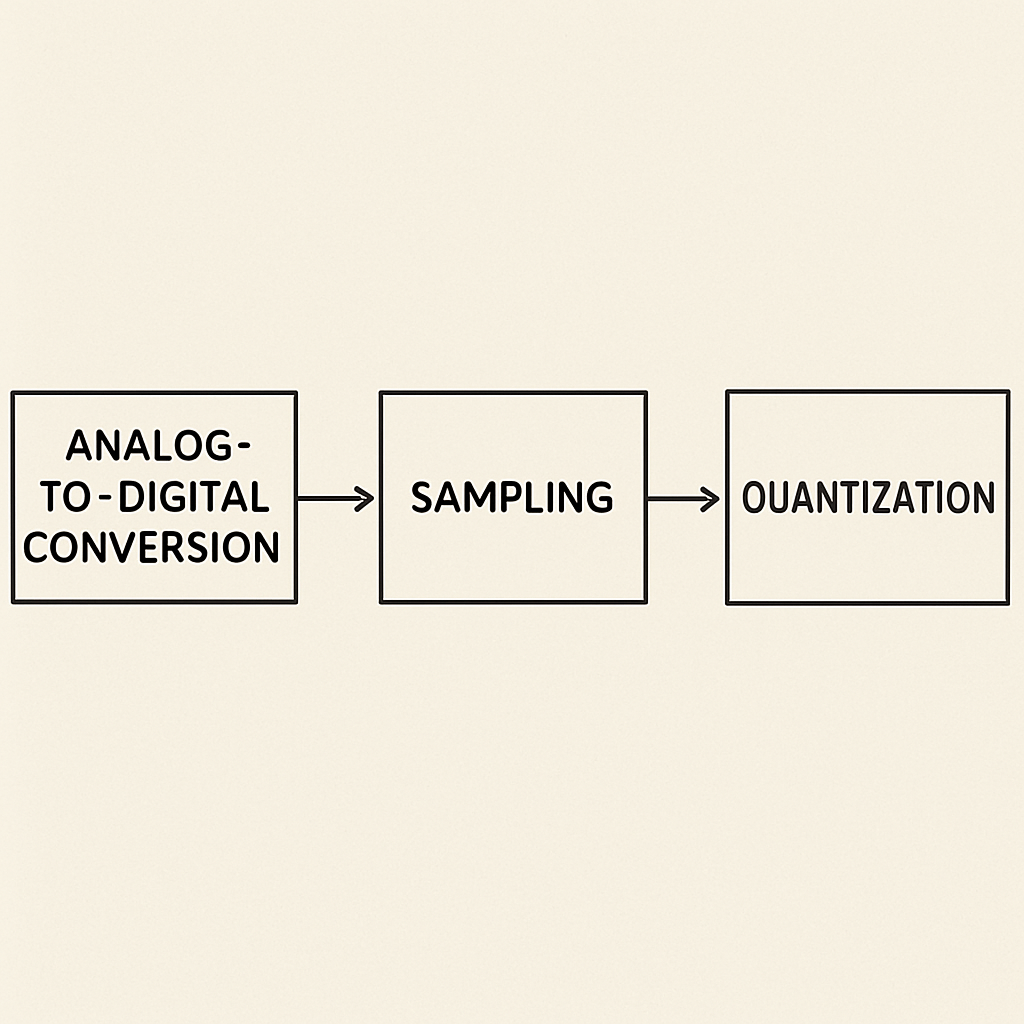An analog-to-digital converter (ADC) is a crucial component in modern electronics. It transforms continuous analog signals into digital data. This conversion is essential for digital devices to process real-world signals.
ADCs are found in many applications, from audio recording to medical imaging. They enable digital systems to interact with the physical world. Understanding ADCs is key for anyone working with electronics.
The conversion process involves sampling methods and signal processing. These techniques ensure accurate digital representation of analog signals. ADCs are vital in data acquisition systems, enhancing their efficiency.
In this article, we will explore the workings of ADCs. We'll discuss their types, applications, and future trends. Whether you're a student or a professional, this guide will deepen your understanding of ADC technology.
Understanding Analog and Digital Signals
Analog signals represent data with continuous waves. These signals vary smoothly over time, like sound and temperature. They are natural and often encountered in the real world.
Digital signals, however, are composed of discrete values. They represent information using binary code, with a series of 0s and 1s. This allows for better precision and processing.
Here's a brief comparison:
Analog Signals:
Continuous
Susceptible to noise
Represented by waves
Digital Signals:
Discrete
Less noise interference
Represented by binary codes
Transforming analog signals to digital forms through ADCs is vital. It allows computers to understand and process these signals efficiently.

What is an Analog-to-Digital Converter (ADC)?
An analog-to-digital converter (ADC) transforms analog signals into digital data. This electronic conversion is crucial for digital devices to process real-world signals efficiently.
ADCs sample analog signals at regular intervals. They convert these samples into binary numbers representing the signal's amplitude. This process enables accurate digital representation.
Here are some key features of ADCs:
Signal Conversion: Analog to digital transformation
Sampling: Captures signal values at intervals
Quantization: Converts samples to discrete digital values
ADCs bridge the gap between the analog world and digital technology. They play a pivotal role in modern electronic systems.

How Does an ADC Work? The Conversion Process
The process of converting analog to digital involves several critical steps. First, the ADC samples the continuous analog signals at specific time intervals. This creates discrete-time values from the signal.
After sampling, quantization occurs. Quantization maps these sampled values to the closest available digital level. This creates a digital approximation of the original signal.
Next, encoding transforms these quantized values into binary code. The binary numbers represent the digital signal's equivalent.
Key steps in ADC conversion:
Sampling: Capture signal at intervals
Quantization: Map samples to nearest digital level
Encoding: Convert quantized data to binary format
Each step ensures that the digital signal mirrors the original analog signal closely.

Sampling Methods and the Nyquist Theorem
Sampling is critical for preserving the integrity of analog signals. It involves taking measurements of the signal's amplitude at evenly spaced intervals. These samples allow digital systems to understand and process the analog input.
The Nyquist Theorem is pivotal in sampling. It states that the sampling rate must be at least twice the highest frequency of the analog signal. Meeting this requirement prevents aliasing, where distinct signals become indistinguishable.
Key sampling considerations:
Rate: Minimum twice the signal's frequency
Avoid Aliasing: Prevent overlapping of signal frequencies
This theorem ensures that the digital representation accurately reflects the original analog signal.

Quantization and Encoding
Quantization is the assignment of discrete digital levels to the sampled values. This process introduces some approximation but is crucial for digital representation.
During encoding, quantized levels are translated into binary codes. These binary numbers are what digital systems use to process the signals.
Together, quantization and encoding form the backbone of converting analog signals to digital data, allowing seamless signal processing.
Key Specifications: Resolution, Sampling Rate, and Accuracy
Understanding ADC performance requires knowledge of key specifications. Resolution, sampling rate, and accuracy are vital for evaluating ADCs.
Resolution defines how finely an ADC can measure an analog signal. It is determined by the number of bits used in conversion. More bits mean a finer resolution and more precision.
The sampling rate indicates how quickly an ADC captures analog signals. A higher rate ensures detailed digital representation, especially important for fast-changing signals.
Key specifications in ADCs:
Resolution: Bits determine measurement precision
Sampling Rate: Speed at capturing signal details
Accuracy: Closeness to true signal value

Accuracy refers to the closeness of a converted signal to its original analog form. Each specification affects how well an ADC performs its role. Choosing the right ADC involves balancing these factors for specific applications.
Types of ADC Architectures
ADCs employ various architectures to suit different needs and constraints. Each type offers unique advantages based on speed, power, and resolution.
Here are some common ADC architectures:
Flash ADC: Offers speed but consumes more power.
Successive Approximation Register (SAR) ADC: Balances speed and power efficiency
Sigma-Delta ADC: Known for high resolution, ideal for audio.
Dual-Slope ADC: Provides accuracy, often used in multimeters.

SAR ADCs find use in applications requiring balanced performance, including in industrial and consumer electronics. They are efficient, offering reliable conversion without hefty power demands.
Flash ADC
Flash ADCs are known for their impressive speed. This architecture uses multiple comparators to provide quick conversions.
They're ideal when real-time processing is required. However, they tend to be costly and consume more power.
Successive Approximation Register (SAR) ADC
SAR ADCs are versatile and efficient. They work by narrowing down the value of the analog input through successive steps.
This method provides a good compromise between speed and power consumption, making it widely used.
Sigma-Delta ADC
Sigma-Delta ADCs are renowned for high resolution. They are particularly useful in audio applications due to their precise digital output.
They convert signals by oversampling, offering superior accuracy at the cost of slower processing speeds.
Dual-Slope and Other ADC Types
The dual-slope ADC is prized for its accuracy and noise rejection, making it suitable for multimeters.
Other architectures exist, each catering to specific needs. Choosing an ADC architecture involves understanding the required performance and application constraints.
Applications of ADCs in Modern Technology
Analog-to-digital converters are crucial in many modern devices, allowing them to interact with the physical world. They convert analog input signals into digital format, facilitating further processing.
ADCs are used extensively in the following areas:
Telecommunications: For converting voice signals.
Medical imaging: Crucial for accurate diagnostics.
Automotive systems: Enable vehicle monitoring and control.
Consumer electronics: Found in smartphones and cameras.
IoT devices: Used for converting sensor data.

Data Acquisition and Signal Processing
Data acquisition relies on ADCs to convert physical quantities into digital data. This data can then be analyzed and utilized in various applications.
Signal processing involves manipulating these digital signals to refine or extract meaningful information. ADCs play a vital role here by providing the initial conversion.
In industries ranging from research to manufacturing, ADCs enable accurate and efficient data handling. They transform analog signals into actionable digital formats, facilitating analysis and application.
Vintage Digital to Analog Converter CD Players
In vintage digital-to-analog converter CD players, ADCs convert analog audio signals to digital. This process involves intricate signal processing to retain audio fidelity.
These players offer a classic audio experience by leveraging advanced signal conversion. The ADCs ensure the high-quality digital output that audiophiles cherish.
Choosing the Right ADC: Factors and Trade-offs
Choosing the right analog-to-digital converter involves evaluating several key factors. Each application has specific requirements that influence the ADC choice.
Here are crucial considerations:
Resolution: Determines accuracy of the digital output.
Sampling Rate: Affects the speed of conversion.
Power Consumption: Important for battery-operated devices.
Cost: Must fit within budget constraints.
Environmental Tolerance: Ensures reliability under varying conditions.
Every application involves trade-offs. High resolution often means slower speed and higher cost. Thus, balancing these factors is key for optimal performance. Selecting an ADC requires understanding both needs and limitations of each project.
Future Trends and Advancements in ADC Technology
The evolution of analog-to-digital converters is ongoing. Key trends include developing ADCs with higher speeds and lower power usage.
Emerging applications like IoT and quantum computing drive innovation. ADCs are becoming more integrated into systems, enhancing efficiency and reducing size. Future advances will focus on expanding capabilities in high-frequency and precision applications, ensuring they meet the demands of advancing technology landscapes.
Conclusion
ADCs are vital for bridging the analog-digital gap. They enable precise electronic conversions across various technologies.
As electronic systems continue to evolve, ADCs remain essential. They transform real-world data into digital formats for processing and analysis.






